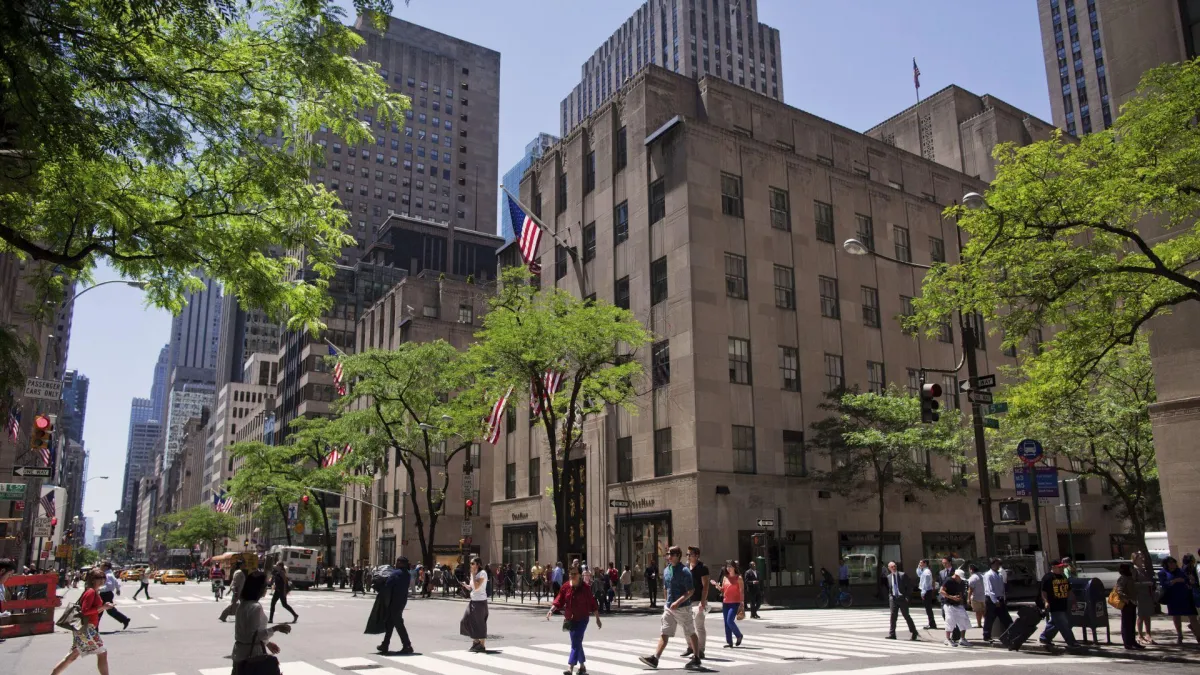
The Death of Erica Tishman: A Preventable Parapet Collapse in Midtown Manhattan
New York City's dense urban environment is home to thousands of aging buildings, many of which require constant maintenance to ensure public safety. However, when building owners neglect their responsibilities, the consequences can be devastating. One such case was the tragic death of Erica Tishman, a well-respected architect and construction executive, who was killed in 2019 by a falling piece of parapet masonry from a Midtown office building. Her untimely death was not an accident but a failure of compliance, enforcement, and responsible building ownership. This incident underscores the necessity of strict adherence to NYC facade inspection laws and the importance of Local Law 126, which aims to prevent such tragedies in the future.
The fatal collapse on Seventh Avenue
On the morning of December 17, 2019, Erica Tishman, 60, was walking along Seventh Avenue near West 49th Street, just steps from Times Square, when a piece of terra-cotta masonry from the 17-story office building at 729 Seventh Avenue broke loose and fell. The falling debris struck her head, leaving her unconscious on the sidewalk. Emergency responders arrived quickly, but she was pronounced dead at the scene.
The NYC Department of Buildings (DOB) launched an immediate investigation and found that the building’s owners were fully aware of the hazardous parapet condition. In April 2019, eight months before Tishman’s death, the DOB had issued a violation for damaged terra-cotta on the upper facade, requiring the owners to make repairs and install a protective sidewalk shed to shield pedestrians. They did neither. The failure to act on this known danger cost Erica Tishman her life.
The tragedy occurred on a rainy day, which may have exacerbated the deterioration of the masonry and contributed to its collapse. Despite repeated warnings and official citations, the building’s management ignored their obligations, demonstrating gross negligence.
Legal repercussions: Criminal charges for neglect
Unlike many past cases of facade failures, the Erica Tishman tragedy resulted in criminal charges against the building’s ownership. In late 2021, the NYC Department of Buildings announced that it was filing criminal court charges against the building’s ownership entity, 729 Acquisition LLC, citing failure to maintain a safe facade and failure to safeguard the public.
The DOB’s legal action was significant because it alleged that the building’s owners had willfully ignored an immediate danger and were therefore criminally negligent in protecting public safety. By failing to install a protective shed or conduct timely repairs, they directly contributed to Tishman’s death.
In addition to the criminal case, Tishman’s family filed a wrongful death lawsuit against the building owners and the City of New York, seeking justice and accountability for her preventable death. The lawsuit argued that the DOB should have enforced the repair order more aggressively, rather than allowing the dangerous condition to persist.
This case set a precedent by highlighting that ignoring parapet safety can lead to criminal consequences, sending a clear message to property owners across NYC.
The role of Local Law 126 in preventing future tragedies
The death of Erica Tishman reinforced the urgency of stronger facade inspection laws. While NYC already had Local Law 11, which mandates periodic facade inspections for buildings taller than six stories, her death revealed that enforcement gaps remained.
How Local Law 126 strengthens building safety
Stricter enforcement of parapet inspections for buildings with known structural risks
Increased penalties for property owners who delay or ignore repair orders
More frequent DOB compliance checks to prevent violations from lingering
Expanded requirements for sidewalk protection measures, such as sheds and scaffolding, when hazardous conditions are identified
By making parapet inspections mandatory and enforcing quicker compliance, Local Law 126 helps prevent tragedies like Tishman’s and holds negligent owners accountable before lives are lost.
Lessons learned: Prioritizing pedestrian safety
The heartbreaking loss of Erica Tishman serves as a sobering reminder that building maintenance is not optional—it is a matter of life and death. If the building owners had taken the DOB’s warnings seriously and made the necessary repairs, this tragedy would never have happened.
What property owners must do to stay compliant
Conduct routine parapet and facade inspections as required by NYC law
Respond immediately to DOB violations and repair orders to avoid legal liability
Install protective measures, such as sidewalk sheds, when required to protect pedestrians
Work with licensed engineers and contractors to ensure structural safety
Negligence has consequences—not only in lawsuits and criminal charges but in irreversible loss of life. The lesson from this tragedy is clear: compliance with NYC facade laws is non-negotiable.
If you own or manage a building in NYC, ensure your parapet and facade inspections are up to date. A few repairs today could save a life tomorrow.